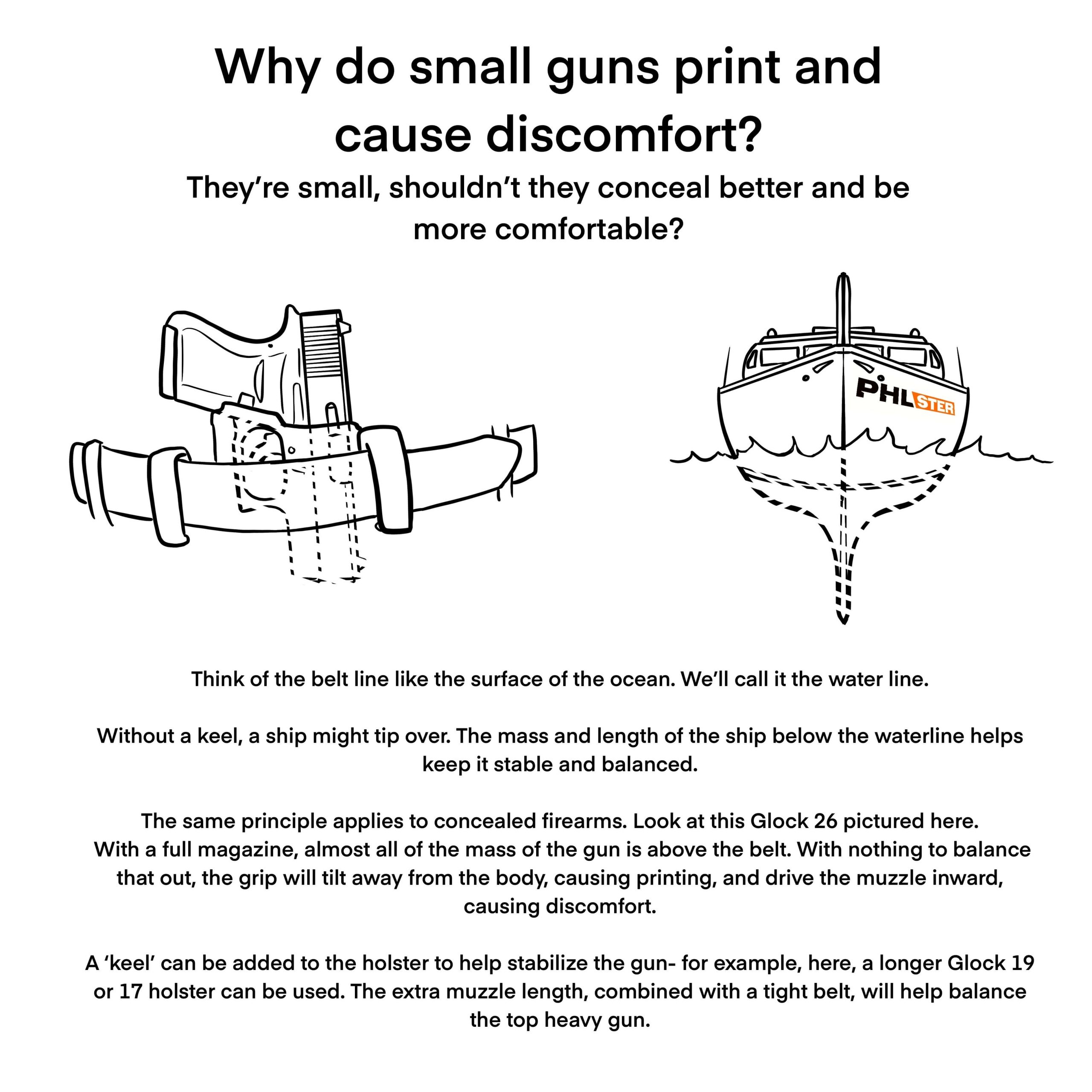Appendix Carry Comfort
How do you sit, bend, squat, and go through a full range of motion while carrying your gun in the appendix position (on the front of the body, usually between about 10 and 2:00)? How do you prevent the gun from poking you? How can it possibly be comfortable to strap a gun to your stomach all day?
Appendix carry comfort depends on getting the gun position exactly right. It takes experimentation and work. Appendix carry is arguably the most difficult carry position to master, but the benefits make it worthwhile for most people. It’s generally more concealable and more comfortable than other carry positions once you get it dialed in.
To make appendix carry comfortable, you need to assess your body and find the best position for the gun on your individual landscape. There is no standardized, one-size-fits-all recipe for what to do. This video shows how to do a basic self-assessment to find your concealment boundaries.
WHAT ELSE CAN HELP ME GET COMFORTABLE WITH APPENDIX CARRY?
While finding your concealment boundaries is a great first step, there’s a lot more to learn. Check out our video series called the Basics of Concealment Mechanics. That will go over how to position the gun on your body, and how to use wings and wedges to get it to lay flat and fit comfortably. You’ll also learn about the Keel Principle, which is important for appendix carry comfort.

CAN APPENDIX CARRY WORK FOR ALL BODY TYPES?
No. Appendix carry does not work for everyone. While almost all body types can find a comfortable and concealable appendix position, there’s one more important consideration: reholstering. Some body types make it difficult or impossible to safely reholster the gun without muzzling yourself (“muzzling” means crossing any part of your body with the muzzle of the gun, so that if the gun discharged, you would be struck by the bullet).
Learning correct reholstering technique makes it possible for most people, including larger folks, to reholster safely without muzzling any part of the body. But if you have limited mobility, or if your specific anatomy makes reholstering unsafe, then appendix carry may not be possible for you at this time. If you’re not sure, the best thing to do is consult with a qualified instructor who can help you assess your abilities and teach you safe reholstering techniques that work with your anatomy.
